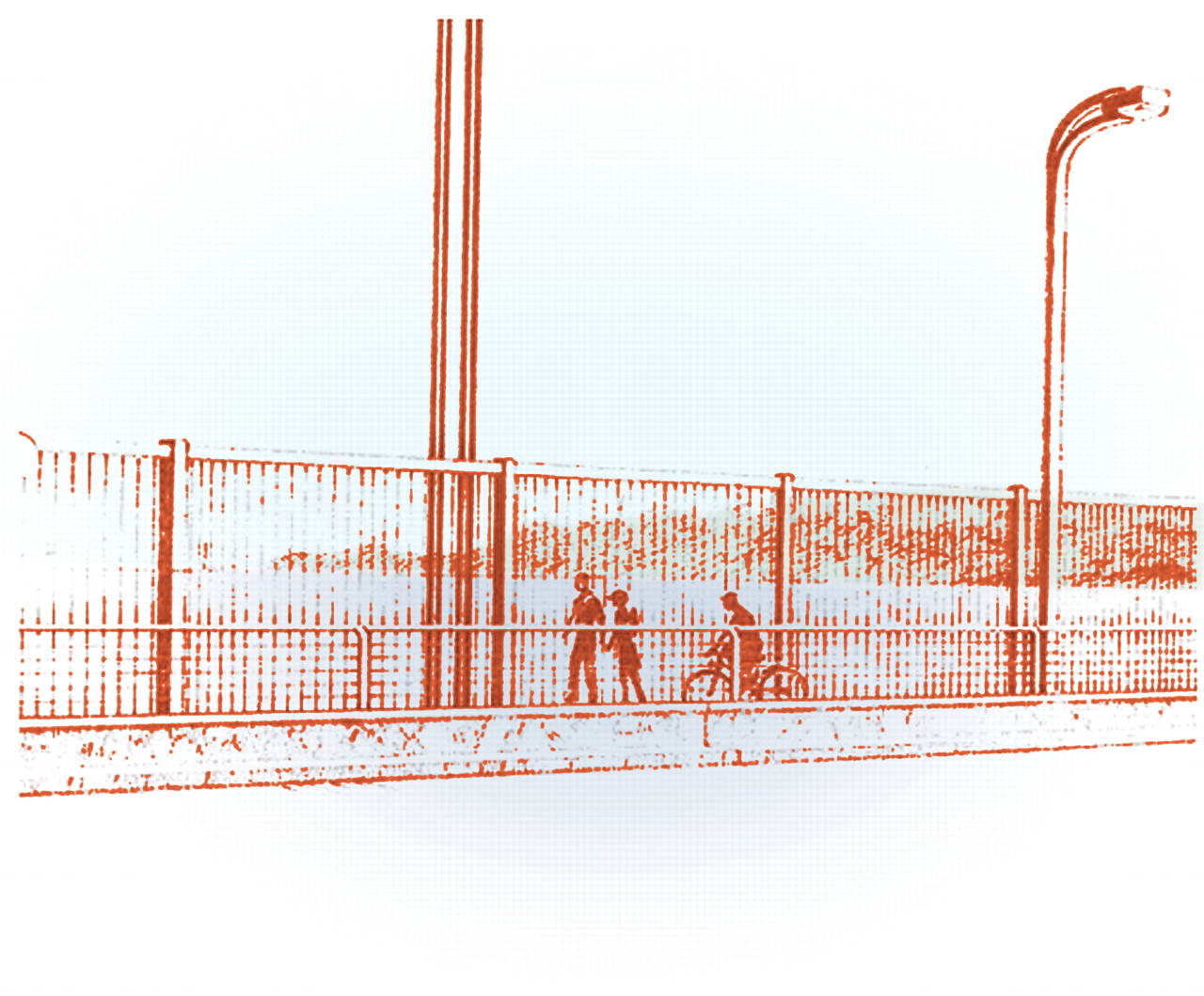In the heartbeat or two between the time that then 19-year-old Kevin Hines hurled himself from San Francisco's famed Golden Gate Bridge and hit the water below, he was possessed by one penetrating insight: “Oh, my God, what have I done? I don't want to die.”
Even more startling than Hines's survival is the realization as he talks of how many among the roughly 25 people a year who jump to their deaths from the bridge must have precisely the same thought in the approximately four seconds it takes to drop, at a speed of 75 miles an hour, into the water 220 feet below.
Only a tiny minority—not more than 2 percent—survive the jump. Contrary to what many jumpers imagine, it is not a graceful, trauma-free way to go: the impact with the water is violent, shattering bones and dismembering limbs.
“I was falling head first. It was so fast the air pressure on my body made it impossible to breathe,” he recounted for Psychiatric News. “By the grace of God, somehow I turned and went in feet first. When I hit the water, I went down probably 50 feet before I started to come back up again, all this time without breathing. I thought I was going to pass out. When I came to the surface, I thought I was dreaming, and I said to myself, `Oh, my God, I'm alive.'”
Something—it turned out to be a seal, he said—bore him up in the water during the few minutes that passed before the Coast Guard picked him up. He suffered shattered vertebrae, requiring him to wear a back brace for the rest of his life, but Hines survived to tell his story to youth and other groups, and to the media (including CNN and the New Yorker magazine, among others).
Today, that story and the stories of family and friends of the many jumpers who did not survive, along with the critical support of psychiatrists with the Psychiatric Foundation of Northern California (PFNC), have helped to create a new groundswell of public, professional, and media support for construction of a suicide barrier across the majestic landmark.
The PFNC was founded in 1993 by the Northern California Psychiatric Society to provide public information and educational programs related to psychiatry and mental health.
The Building and Operations Committee of the 19-member Golden Gate Bridge Board—the administrative panel that oversees matters relating to the bridge—recently recommended that the full board consider proposals from PFNC and others for the construction of a barrier. The Bridge Board voted 15-1 to begin searching for outside money to pay for studies of a suicide barrier.
“It's the number-one site in the world for suicide,” psychiatrist Mel Blaustein, M.D., president of the foundation and chair of the PFNC's Task Force on a Suicide Barrier, told Psychiatric News. He is also medical director of the department of psychiatry at St. Francis Hospital in San Francisco.
“Other sites like the Eiffel Tower and the Empire State Building have erected barriers and have virtually put an end to suicide attempts there,” Blaustein said.
Safeguarding Aesthetic Appeal
Yet this is not the first effort to construct a suicide barrier along the Golden Gate Bridge, and opposition to the idea is surprisingly strong.
Cost is one predictable consideration. PFNC Executive Director Janice Tagart told Psychiatric News that the chief engineer with the Golden Gate Bridge Board had estimated it would cost $2 million just for preconstruction studies and approvals. The barrier would likely cost millions more.
Emotions also run high in the Bay Area about safeguarding the aesthetic appeal of what is widely regarded as one of the world's loveliest structures.
But Blaustein noted that suicide barriers have been successfully erected around the Eiffel Tower and Empire State Building without diminishing aesthetic appeal and without reducing tourism to the sites. Aesthetically pleasing proposals for the bridge have been put forward (see illustration), and Tagart said it may be possible to sponsor an international competition to attract many more designs, increasing the odds that the ideal balance of beauty and safety will be found.
Complementing both of these concerns is a pervasive attitude that people willing to leap off of a 220-foot-high bridge will not be deterred from suicide just because they are prevented from jumping off the Golden Gate Bridge. Why spend millions of dollars defacing a work of art when would-be jumpers will just find some other way to die?
Because they won't, say Hines, the family and friends of those who have jumped, and psychiatrists working with patients who have attempted suicide. They assert that most jumpers are not chronic suicide attempters, but act on a momentary impulse that could be easily thwarted with a barrier (
see box).
Hines, who has bipolar illness, was in the midst of a manic episode when he walked across the bridge on September 25, 2000, crying and hearing voices telling him he had to die. A tourist asked him to take a picture of her, and after he snapped the picture and returned the camera, the woman turned and walked away. “I thought, `That's it. No one cares.'”
It was then, without even bothering to step out onto the railing, that he hurled himself over. Today, he tells people that his leap from the bridge was an impulsive act that would not have been physically possible had a barrier been in place.
A landmark 1978 study conducted by Richard Seiden, Ph.D., showed that people who are stopped from jumping off the bridge rarely go on to kill themselves in other ways. Seiden followed for an average of 26 years 515 persons who were removed from the Golden Gate Bridge before they could jump; 94 percent were either still alive or had died of natural causes.
The article appeared in the winter 1978 issue of Suicide and Life Threatening Behavior.
Seiden's findings are supported by clinical experience with patients who are brought to treatment in the city's hospitals after being talked down or after calling for help from a hotline on the bridge.
“Most of these suicide attempts are temporary, acute reactions to overwhelming pain,” said Blaustein. “People don't often go on to commit suicide somewhere else.”
PFNC Works With Bridge Board
PFNC's Tagart noted that the true number of Golden Gate suicides is unknown because many may jump unseen in the dark or the fog, and the bodies may be swept away in the tides. Moreover, the city has stopped making the suicide figures public.
There have been a number of attempts to have a suicide barrier built on the bridge since it opened in 1937. The recent effort to resurrect the idea, Tagart noted, was aided by filmmaker Eric Steele, who aimed a camera at the bridge continuously for 12 months last year, capturing the suicides that occurred on tape. It badly surprised the bridge board, which had given its approval to the film without knowing that the purpose was to make a record of people killing themselves.
Tagart said that 19 bodies were recovered last year but that Steele may have filmed as many as 24.
She and others emphasized that PFNC is working diligently with individual members of the Golden Gate Bridge Board to foster a cooperative alliance, rather than an atmosphere of “us against them.”
Blaustein said the work of PFNC on the suicide barrier has garnered significant respect from the larger community. “This is a nice model of how psychiatrists can be active and work in the community while also doing something for the profession,” he said.
Today, Hines appears at board meetings to support the efforts of the PFNC. He is finishing a college degree while also working to become an actor and filmmaker.
And he has the energy and enthusiasm of one who knows he has been touched with a message to share. Is he still in treatment for bipolar depression?“ Oh, yeah,” he said, with the conviction of one who is in it now for the long haul. “That's for life.”
The study, “Where Are They Now? A Follow-up Study of Suicide Attempters From the Golden Gate Bridge,” is posted online at the PFNC's Web site at<www.pfnc.org/PFNC-GGBSeidenArticle4.pdf>.▪

